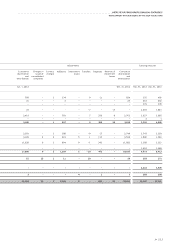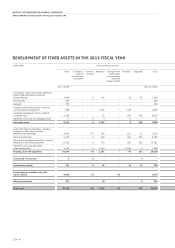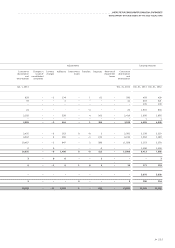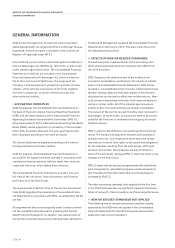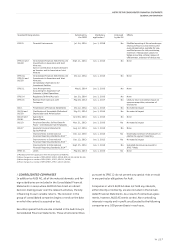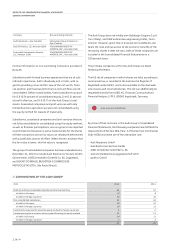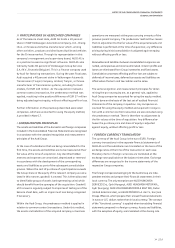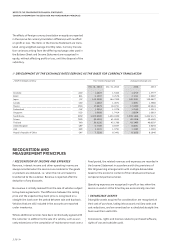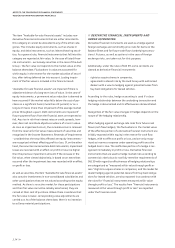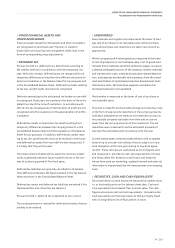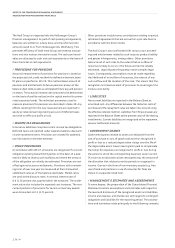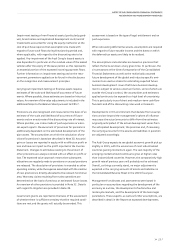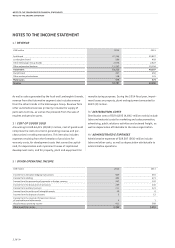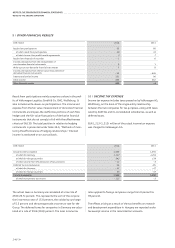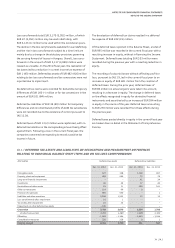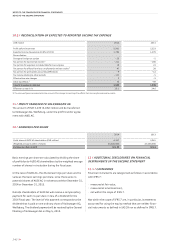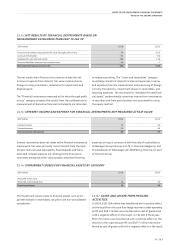Audi 2014 Annual Report Download - page 233
Download and view the complete annual report
Please find page 233 of the 2014 Audi annual report below. You can navigate through the pages in the report by either clicking on the pages listed below, or by using the keyword search tool below to find specific information within the annual report.
NOTES TO THE CONSOLIDATED FINANCIAL STATEMENTS
RECOGNITION AND MEASUREMENT PRINCIPLES
>>
233
Financial liabilities are categorized as follows:
>financial liabilities measured at fair value through profit
or loss,
>financial liabilities measured at amortized cost.
Assignment to one of these categories depends on the purpose
in question of the financial instrument and is reviewed at the
end of each reporting period.
The Audi Group does not make use of the fair value option, i.e.
choosing to measure certain assets and liabilities at fair value
through profit or loss.
For purchases and sales in the customary manner, recognition
takes place using settlement date accounting, i.e. on the day
on which an asset is delivered.
Initial measurement of financial assets and liabilities is carried
out at fair value.
Subsequent measurement is dependent on the category as-
signed in accordance with IAS 39 and is carried out either at
amortized cost or at fair value.
The amortized cost of a financial asset or financial liability,
using the effective interest method, is the amount at which a
financial instrument was measured at initial recognition minus
any principal repayments, impairment losses or uncollectible
debts.
In the case of current financial assets and liabilities, the amor-
tized costs basically correspond to the nominal value or the
repayment value.
Fair value generally corresponds to the market value or trading
price. If no active market exists, fair value is determined as far
as possible using other observable input factors. If no such
input factors are available, fair value is determined using in-
vestment mathematics methods, for example by discounting
future cash flows at the market rate or applying established
option pricing models.
Financial instruments are abandoned if the rights to payments
from the investment have expired or been transferred and the
Audi Group has substantially transferred all opportunities and
risks associated with their title.
With regard to factoring within the Audi Group, essentially all
opportunities and risks are transferred.
Financial assets and liabilities are only offset if offsetting the
amounts is legally enforceable at the current time and if there
is an actual intention to offset. As a general rule, no financial
assets and liabilities are offset within the Audi Group due to
the required conditions not being met. Given the general lack
of any global offsetting agreements or similar arrangements,
it is also not possible to carry out offsetting under certain
conditions.
Financial assets and liabilities include both non-derivative and
derivative claims or commitments, as detailed below.
//
NON-DERIVATIVE FINANCIAL INSTRUMENTS
The “Loans and receivables” and “Financial liabilities measured
at amortized cost” categories include non-derivative financial
instruments measured at amortized cost. These include, in
particular:
>borrowings,
>trade receivables and payables,
>current other assets and liabilities,
>financial liabilities,
>cash and cash equivalents.
Receivables and liabilities in foreign currencies are measured
at the relevant closing rates.
In the case of current items, the fair values to be additionally
indicated in the Notes correspond to the amortized costs. For
assets and liabilities with a remaining term of more than one
year, fair values are determined by discounting future cash flows
at market rates. Recognizable credit risks associated with “Loans
and receivables” are accounted for by carrying out specific
allowances. These are entered in the amount of the incurred loss
for significant individual receivables using benchmarks applied
uniformly across the Group. Potential impairment is assumed in
the event of various circumstances such as a payment delay of a
specific duration, introduction of coercive measures, threat of
insolvency or excessive debts, application for or opening of
insolvency proceedings or failure of restructuring measures.
Impairment losses on receivables are regularly posted to sepa-
rate impairment accounts and abandoned at the same time as
the corresponding impaired receivable.


